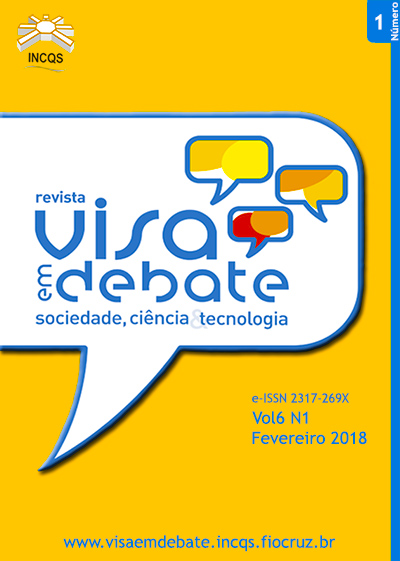Implementation, availability and regulatory status of an OECD accepted Reconstructed Human Epidermis model in Brazil
DOI:
https://doi.org/10.22239/2317-269X.01055Keywords:
Reconstructed Human Epidermis, SkinEthic™ RHE, Preclinical In Vitro Testing, Alternative Methods, Skin Irritation, Corrosion, Safety Assessment, Toxicological testsAbstract
Introduction: In 2014, Brazil has joined the growing list of countries to ban cosmetic products from being tested on animal models. The new legislation comes into force in 2019. As a result, the interest for validated alternative testing methods for safety assessment has been increasing in academia, industry and associations. However, the lack of specific legislation on the use of biological material of human origin for toxicological tests makes the access to alternative in vitro models difficult. Furthermore, importation to Brazil is not possible on timely manner. Method: In this article, we report the implementation process of a Reconstructed Human Epidermis (SkinEthic™ RHE), an alternative model internationally accepted by OECD, through a technology transfer from EPISKIN® Lyon to Brazil. Regulatory evolution has been motivating the implementation and wide use of alternative methods to animal testing in several industry segments including cosmetic and pharmaceutical. Results: Protocol has been shown to be robust and highly reproducible. Quality control parameters (histological analysis, barrier function test and tissue viability) were performed on 24 batches assembled in Brazil. SkinEthic™ RHE model use allows the full replacement of animal test methods for skin hazards identification. It has regulatory acceptance for several toxicological endpoints, such as the Draize test for skin irritation and corrosion. It allows the reduction and refining of pre-clinical protocols through tiered strategies. Implementation of SkinEthic™ RHE protocol is just a first and important step towards a new approach of toxicological safety testing in Brazil. Conclusion: The implementation was successfully done and reported here. However, in order to follow completely the new legislation up to 2019, the availability of validated models is essential. Quality control tests done on RHE batches produced in Brazil demonstrate that the model met OECD acceptance criteria and therefore can be used for reliable prediction of irritation and corrosion classification.Downloads
Downloads
Published
Issue
Section
License
Copyright (c) 2018 Health Surveillance under Debate: Society, Science & Technology (Vigilância Sanitária em Debate: Sociedade, Ciência & Tecnología) – “Visa em Debate”

This work is licensed under a Creative Commons Attribution-NonCommercial-NoDerivatives 4.0 International License.
COPYRIGHT ALLOWANCE The author (s) hereinafter designated as the ASSIGNOR hereby assign and transfer, free of charge, the ownership of the copyrights related to this ARTICLE to the Vigilância Sanitária em Debate: Sociedade, Ciência & Tecnologia (Health Surveillance under Debate: Society, Science & Technology) – Visa em Debate, represented by FUNDAÇÃO OSWALDO CRUZ, established at Av. Brasil, nº 4365, Manguinhos, Rio de Janeiro, RJ, Brazil, CEP 21045-900, under the conditions set out below: (a) The terms and conditions set forth in this Agreement shall apply to the following: 1. The ASSIGNOR declares that they s(he) is (are) the author (s) and owner (s) of the copyrighted property of the ARTICLE submitted. 2. The ASSIGNOR declares that the ARTICLE does not infringe the copyrights and / or other property rights of third parties, that the disclosure of images (if any) has been authorized and that they s(he) assume(s) full moral and / or property liability for its content, before third parties. 3. THE ASSIGNOR assigns and transfers all copyrights relating to the ARTICLE to the ASSIGNEE, especially the rights of editing, publication, translation into another language and reproduction by any process or technique. The ASSIGNEE becomes the exclusive owner of the rights related to the ARTICLE, and any reproduction, totally or partially, is prohibited in any other means of publicity, printed or electronic, without prior written authorization from the ASSIGNEE. 4. The assignment is free and, therefore, there will be no remuneration for the use of the ARTICLE by the ASSIGNEE.






